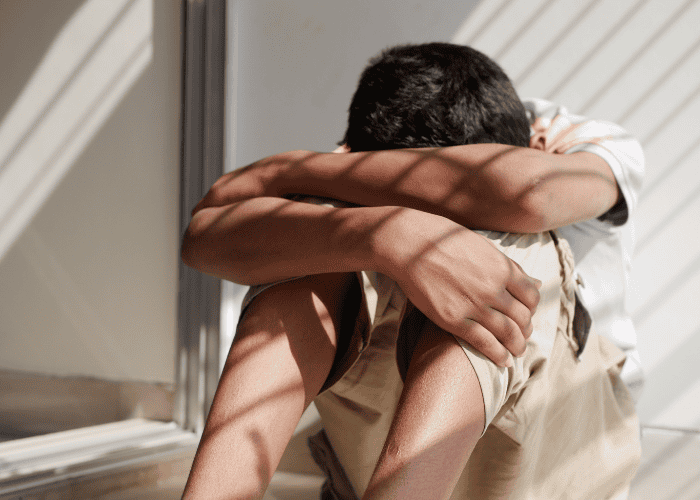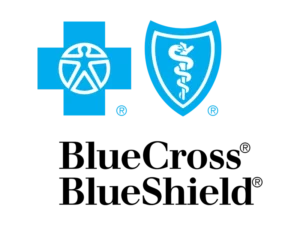Excessive Guilt & Shame in Teens: Emotional Struggles and Help

At some point in our lives, we all experience guilt. For instance, if we make a mistake that causes negative outcomes or we hurt someone close to us, it’s natural to feel guilty. In fact, guilt can sometimes be beneficial, as it may prompt us to take responsibility for our actions, which is usually encouraged.
Shame, on the other hand, is related to guilt, but often isn’t tied to a specific mistake we made. Instead, it can encompass a perception of ourselves that may or may not be accurate – and can lead to excessive feelings of guilt.
Excessive guilt and shame in teens are things to be addressed sooner rather than later, as they can lead to serious mental health problems. However, if your child starts expressing strong feelings of guilt and shame, you might be at a loss for how to help.
This page covers all you need to know about teen guilt and shame, covering the following topics:
- What teen guilt and shame is
- Causes of guilt in adolescents
- Signs of underlying mental health issues
- Therapy for guilt and shame in adolescents
- Parental support for guilt-ridden teens
- Where to find professional support

What Is Teen Guilt and Shame?
As mentioned above, guilt and shame are related, but they are distinct feelings. The main difference between the two is that guilt involves feeling bad about a particular action, and it is typically a short-term feeling. In contrast, shame is often associated with a negative perception of yourself that remains over time.1
In this sense, shame is typically always considered maladaptive, while guilt can be justified in certain situations and has the ability to motivate teens to do better in the future.
However, it is believed that there are two types of guilt. One type is thought to be beneficial, as it targets problem-solving, correcting behavior, and making amends after a mistake. The other type is maladaptive, as it focuses on feeling bad after making a mistake and ruminating on negative feelings instead of taking action to correct the problem in the future.
In adolescence, excessive guilt and shame may be signs of emotional struggles. Specifically, depressive symptoms are closely tied to feelings of guilt and shame in teens. For example, a symptom of depression is believing that you have a serious character flaw that makes you to blame for events out of your control.1
Understanding the causes of guilt and shame can help families get to the root of the problem. But what are the causes of teen guilt and shame?
Causes of Guilt in Adolescents
In truth, there’s likely no singular cause of feelings of guilt and shame. Instead, they may result from a combination of genetic, environmental, and biological factors.
For instance, genetics has been shown through research to impact feelings of guilt and shame. This link was demonstrated through twin studies, meaning that researchers looked at identical twins and measured differences in guilt and shame in similar and separate environments.2
However, we’ve all heard the argument of nature vs. nurture. So, while our genetics may predispose us to certain characteristics, there are also environmental factors that could play a role.
A few examples of environmental causes of guilt in adolescents include:2,3
- Verbal and physical abuse in the home
- Being bullied in school
- Poor academic performance
- Traumatic life events
- Abandonment by a parent or family member
- Parental rejection
If your child has been exposed to any of the factors listed above, they may be at a higher risk of suffering from excessive guilt and shame in adolescence. In addition, if mental health disorders and feelings of guilt and shame run in the family, it’s important to be aware that these feelings can also arise in your teen.
Early intervention can make a big difference in your teen’s outlook for the future, so understanding the signs of potential mental health issues may be important.
Signs of Underlying Mental Health Issues
Adolescence is a time of significant change, which can go hand-in-hand with stress and painful emotions. Recognizing shame in adolescents is the first step to better understanding their emotional struggles. However, you could also keep an eye out for some of the following signs of underlying mental health issues in teens.
Depression
Early signs of depression in teens can include isolating and withdrawing from friends, problems with sleep, increased or decreased appetite, and mood instability. These are symptoms that parents can usually see if they know what to look for. However, other symptoms of depression in teens aren’t as apparent. For instance, patterns of negative thinking, self-blame, shame, and guilt – these symptoms are just as serious but can often go unnoticed.5 Early detection of depressive symptoms in adolescence allows for access to treatment so that teens can get the mental health support they need.
Eating Disorders
Eating disorders such as anorexia, bulimia, and binge-eating disorder are associated with guilt and shame in adolescents. Oftentimes, eating disorder behaviors are ways that teens try to maintain control of a situation in which they feel helpless. Shame around body image issues and intense self-criticism are also factors that can influence the development of an eating disorder.
The following are some warning signs of a teen eating disorder: restricting food intake, rapid increase in exercise, feelings of being “fat,” and avoiding eating in public.6 If you notice any of these signs in your teen, it is important to bring them to both a medical doctor and a mental health professional to be properly evaluated.
ADHD
Sometimes, excessive guilt and shame are related to a teen’s feelings of inability to focus. If this is the case, you might want to look for signs of ADHD, including difficulty paying attention to tasks, poor academic performance, low self-esteem, and problems with peers. When left untreated, these symptoms can worsen, sometimes even resulting in risky behaviors.7 Therefore, catching these warning signs early on may be the key to finding effective treatment to help your child.
There is a link between neurological or mental disorders and guilt, spanning a range of diagnoses, and the list above is not intended to be exhaustive. If you notice a big shift in your child’s mentality or behavior, it’s best to seek out the guidance of a mental health professional.
Therapy for Guilt and Shame in Adolescents
There are different types of therapy to treat teen guilt and shame. Most of the time, behavioral and cognitive interventions are the first line of treatment. For instance, cognitive behavioral therapy (CBT) and dialectical behavior therapy (DBT) are two approaches that can be used for building self-esteem in teens and promoting healthy emotional expression. Below, we discuss these two forms of therapy in more detail.
Cognitive Behavioral Therapy (CBT)
CBT includes a combination of cognitive strategies and behavioral interventions to address mental health issues in teens. One of its main techniques that has proven effective in changing negative thinking patterns is called “cognitive restructuring.” Cognitive restructuring involves looking at a given situation, evaluating it objectively, and identifying triggers of emotional responses. Then, adolescents are encouraged to reframe negative interpretations by challenging cognitive distortions like black and white thinking and mind-reading.8 By addressing these negative thought patterns first, therapists can then start rewarding positive changes in behavior.
Dialectical Behavior Therapy (DBT)
DBT consists of four main modules, or areas of focus: mindfulness, emotion regulation, distress tolerance, and interpersonal effectiveness. Emotion regulation strategies are often critical for addressing excessive guilt and shame in teens. Therefore, DBT focuses on using practical skills to address emotional problems. A few examples of emotion regulation skills include:9
- Managing vulnerability factors: Such as getting enough sleep, exercise, and food.
- Checking the facts: When an unsettling situation occurs, teens can be quick to react based on strong emotions. Checking the facts involves stopping to look at what is going on without accounting for negative feelings.
- Coping ahead: Preparing for upcoming difficult situations and building resiliency for when challenges arise. This can be done through identifying triggers and practicing stress management techniques.
- Building mastery: This requires practicing skills learned to develop confidence and a better outlook on life.
While a variety of therapeutic interventions are effective for treating mental health problems in teens, CBT and DBT are two of the most popular options implemented.
Parental Support for Guilt-Ridden Teens
Engaging parents in the therapy process for adolescents can help reinforce positive behaviors. DBT family skills groups provide parental support for guilt-ridden teens by educating parents on problem behaviors and the steps required to change them each day.9 Additionally, CBT often incorporates family therapy sessions. These allow a teen to not only have their own weekly psychotherapy sessions, but also a chance to discuss problems and progress with parents in a safe environment.8
Another way that parents can help is by seeking out support groups for teens with guilt issues and encouraging their child to participate. Both online and in-person peer support groups have been shown to have positive effects on adolescent mental health.11 This is because being around others with similar issues can provide a sense of understanding and can decrease feelings of guilt and shame in teens.10
Learning about your teen’s mental health struggles is also beneficial in getting the right treatment. By continuing to engage in your teen’s treatment, you can encourage them to implement the skills they’re learning with their therapist and generalize them to new situations.

Mission Prep: Professional Mental Health Support for Your Child
At Mission Prep, our mental health treatment options target a variety of conditions, including depression, anxiety, and other mood and thought disorders. Our facilities include several outpatient treatment options that incorporate DBT and CBT for teens, so there is flexibility in finding the right fit for your child.
If you want to help your child with their emotional struggles and are interested in learning more about our services, contact us today. Our team of mental health specialists is ready to answer any questions you have and provide recommendations depending on your child’s specific needs.
References
- Tilghman-Osborne, C., Cole, D. A., Felton, J. W., & Ciesla, J. A. (2008). Relation of guilt, shame, behavioral and characterological self-blame to depressive symptoms in adolescents over time. Journal of Social and Clinical Psychology, 27(8), 809–842. https://doi.org/10.1521/jscp.2008.27.8.809
- Nikolić, M., Hannigan, L. J., Krebs, G., Sterne, A., Gregory, A. M., & Eley, T. C. (2022). Aetiology of shame and its association with adolescent depression and anxiety: Results from a prospective twin and sibling study. Journal of Child Psychology and Psychiatry, 63(1), 99–108. https://doi.org/10.1111/jcpp.13484
- Marici, M., Clipa, O., Runcan, R., & Pîrghie, L. (2023, June). Is rejection, parental abandonment or neglect a trigger for higher perceived shame and guilt in adolescents? Healthcare, 11(12), 1724. https://doi.org/10.3390/healthcare11121724
- Ranney, M. L., et al. (2018). Problem behaviors and psychological distress among teens seen in a national sample of emergency departments. Academic Pediatrics, 18(6), 650–654. https://doi.org/10.1016/j.acap.2018.03.008
- Petito, A., et al. (2020). The burden of depression in adolescents and the importance of early recognition. The Journal of Pediatrics, 218, 265–267. https://doi.org/10.1016/j.jpeds.2020.01.017
- Rowe, E. (2017). Early detection of eating disorders in general practice. Australian Family Physician, 46(11), 833–838.
- Brahmbhatt, K., Hilty, D. M., Hah, M., Han, J., Angkustsiri, K., & Schweitzer, J. (2016). Diagnosis and treatment of ADHD during adolescence in the primary care setting: Review and future directions. The Journal of Adolescent Health, 59(2), 135–143. https://doi.org/10.1016/j.jadohealth.2016.03.009
- Kaur, V. G., & Begum, G. S. (n.d.). An experimental investigation to assess the efficacy of cognitive behavior therapy for depression in teenagers. Unpublished manuscript.
- Neacsiu, A. D., Bohus, M., & Linehan, M. M. (2014). Dialectical behavior therapy: An intervention for emotion dysregulation. In J. J. Gross (Ed.), Handbook of emotion regulation (2nd ed., pp. 491–507). Guilford Press.
- Lu, S., Hart, L. M., Jorm, A. F., Gregg, K., Gross, M., Mackinnon, A. J., & Morgan, A. J. (2023). Adolescent peer support for mental health problems: Evaluation of the validity and reliability of the Mental Health Support Scale for Adolescents. BMC Psychology, 11(1), 193. https://doi.org/10.1186/s40359-023-01239-0
- Ali, K., Farrer, L., Gulliver, A., & Griffiths, K. M. (2015). Online peer-to-peer support for young people with mental health problems: A systematic review. JMIR Mental Health, 2(2), e4418. https://doi.org/10.2196/mental.4418













